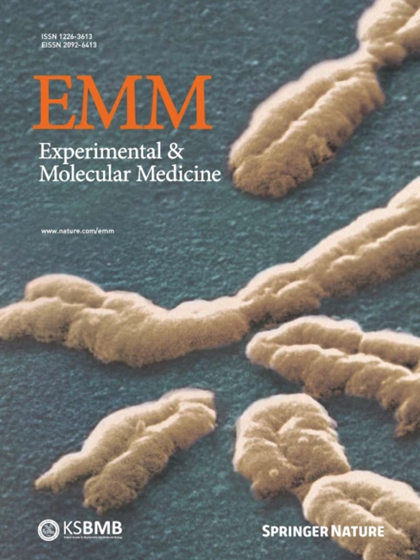Decoding the mechanism of proanthocyanidins in central analgesia: redox regulation and KCNK3 blockade
IF 9.5
2区 医学
Q1 BIOCHEMISTRY & MOLECULAR BIOLOGY
引用次数: 0
Abstract
Neuropathic pain causes enduring physical discomfort and emotional distress. Conventional pharmacological treatments often provide restricted relief and may result in undesirable side effects, posing a substantial clinical challenge. Peripheral and spinal redox homeostasis plays an important role in pain processing and perception. However, the roles of oxidative stress and antioxidants in pain and analgesia on the cortical region during chronic pain remains obscure. Here we focus on the ventrolateral orbital cortex (VLO), a brain region associated with pain severity and involved in pain inhibition. Using a spared nerve injury mouse model, we observed the notable reactive oxygen species (ROS)-mediated suppression of the excitability of pyramidal cells (PYRVLO) in the VLO. Nasal application or microinjection of the natural antioxidants proanthocyanidins (PACs) to the VLO specifically increased the activity of PYRVLO and induced a significant analgesic effect. Mechanistically, PACs activate PYRVLO by inhibiting distinct potassium channels in different ways: (1) by scavenging ROS to reduce ROS-sensitive voltage-gated potassium currents and (2) by acting as a channel blocker through direct binding to the cap structure of KCNK3 to inhibit the leak potassium current (Ileak). These results reveal the role of cortical oxidative stress in central hyperalgesia and elucidate the mechanism and potential translational significance of PACs in central analgesia. These findings suggest that the effects of PACs extend beyond their commonly assumed antioxidant or anti-inflammatory effects. Neuropathic pain is a challenging condition that affects the nervous system, causing abnormal sensations and heightened sensitivity. Researchers explored the potential of proanthocyanidins, natural antioxidants found in plants, to alleviate neuropathic pain. The study involves experiments on mice with nerve injuries to mimic neuropathic pain. Researchers administered proanthocyanidins to the ventrolateral orbitofrontal cortex, a key brain region for pain regulation. They measured pain responses and examined brain activity using various techniques, including electrode recordings and molecular analysis. Results showed that proanthocyanidins decreased pain sensitivity in mice by lowering oxidative stress and modulating specific potassium channels that help control nerve cell activity. This dual mechanism—antioxidant effects and potassium channel regulation—highlights proanthocyanidins as an alternative to conventional pain treatments. This summary was initially drafted using artificial intelligence, then revised and fact-checked by the author.

解码原花青素在中枢镇痛中的作用机制:氧化还原调节和 KCNK3 阻断。
神经性疼痛会引起持续的身体不适和情绪困扰。传统的药物治疗往往提供有限的缓解,并可能导致不良的副作用,提出了实质性的临床挑战。外周和脊髓氧化还原稳态在疼痛加工和感知中起重要作用。然而,氧化应激和抗氧化剂在慢性疼痛时皮层疼痛和镇痛中的作用仍然不清楚。在这里,我们重点研究腹外侧眶皮层(VLO),这是一个与疼痛严重程度相关的大脑区域,并参与疼痛抑制。利用神经损伤小鼠模型,我们观察到活性氧(ROS)介导的对VLO锥体细胞(PYRVLO)兴奋性的显著抑制。经鼻或微注射天然抗氧化剂原花青素(PACs)可显著提高PYRVLO的活性,并具有明显的镇痛作用。在机制上,PACs通过不同的方式抑制不同的钾通道来激活PYRVLO:(1)通过清除ROS来减少ROS敏感的电压门控钾电流;(2)通过直接结合KCNK3的帽结构作为通道阻滞剂来抑制泄漏的钾电流(illeak)。这些结果揭示了皮质氧化应激在中枢痛觉过敏中的作用,阐明了PACs在中枢镇痛中的作用机制和潜在的翻译意义。这些发现表明,PACs的作用超出了通常认为的抗氧化或抗炎作用。
本文章由计算机程序翻译,如有差异,请以英文原文为准。
求助全文
约1分钟内获得全文
求助全文
来源期刊

Experimental and Molecular Medicine
医学-生化与分子生物学
CiteScore
19.50
自引率
0.80%
发文量
166
审稿时长
3 months
期刊介绍:
Experimental & Molecular Medicine (EMM) stands as Korea's pioneering biochemistry journal, established in 1964 and rejuvenated in 1996 as an Open Access, fully peer-reviewed international journal. Dedicated to advancing translational research and showcasing recent breakthroughs in the biomedical realm, EMM invites submissions encompassing genetic, molecular, and cellular studies of human physiology and diseases. Emphasizing the correlation between experimental and translational research and enhanced clinical benefits, the journal actively encourages contributions employing specific molecular tools. Welcoming studies that bridge basic discoveries with clinical relevance, alongside articles demonstrating clear in vivo significance and novelty, Experimental & Molecular Medicine proudly serves as an open-access, online-only repository of cutting-edge medical research.
 求助内容:
求助内容: 应助结果提醒方式:
应助结果提醒方式:


